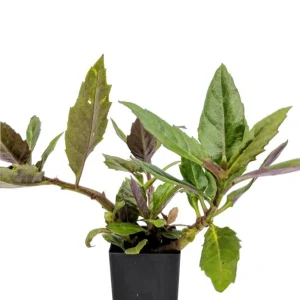Description
Radium Weed, also known as Petty Spurge or Milkweed, is a fascinating plant with a wide range of uses. This annual herb, native to Europe and North Africa, has naturalized in many parts of Australia. It belongs to the Euphorbiaceae family and is known for its unique properties and adaptability.
Usually available: March to December
Life cycle: Annual
Height: 20cm
Position: Sun / part shade
Soil preference: Well drained
Garden Use
Radium Weed is a valuable addition to any garden. Its small, green leaves and tiny, green flowers add a delicate touch to garden beds and borders. The plant is known for its hardiness and ability to thrive in various conditions, making it an excellent choice for both novice and experienced gardeners.
Medicinal Use
Traditionally, Radium Weed has been used for its medicinal properties. The milky sap of the plant has been applied topically to treat skin conditions such as warts, corns, and skin cancers. A recent study published in the British Journal of Dermatology found that the sap of Radium Weed was effective in treating basal cell carcinoma, a common type of skin cancer (Ramsay et al., 2017).
Culinary Use
The young leaves of Radium Weed can be used as a vegetable, either cooked or raw in salads. They have a slightly peppery taste, similar to watercress. However, it is essential to consume them in moderation, as the plant contains toxic compounds that can cause irritation if ingested in large quantities.
Other Uses
Radium Weed has been used as a natural dye, producing a yellow color. The plant has also been employed in traditional medicine to treat various ailments, including digestive issues and respiratory problems.
In a survival situation, Radium Weed can be a valuable resource. The plant’s ability to thrive in harsh conditions and its medicinal properties make it a useful addition to any prepper’s garden. The sap can be used to treat skin ailments, while the young leaves can provide a source of nutrition. Additionally, the plant’s ability to accumulate heavy metals could be used to purify water in emergency situations.
Growing Conditions and Climate
Radium Weed thrives in a wide range of climates and soil types, making it suitable for growing in most parts of Australia. It prefers well-drained soils and can tolerate both full sun and partial shade. The plant is drought-tolerant and can survive in low-nutrient soils, making it an excellent choice for areas with poor soil quality.
Interesting Facts
- The name “Radium Weed” comes from its ability to absorb radioactive elements from the soil, making it a potential tool for bioremediation of contaminated sites.
- The plant has a unique defense mechanism against herbivores. When damaged, it releases a milky sap that is toxic and can cause irritation to the skin and eyes of animals.
Gardening Tips
- Radium Weed can be easily propagated from seed. Sow the seeds directly in the garden in spring or autumn.
- To control the spread of the plant, remove the flowers before they set seed.
- Radium Weed makes an excellent companion plant for vegetables, as it attracts beneficial insects such as ladybugs and hoverflies, which help control pests.
Complimentary Plants
Radium Weed pairs well with other hardy, drought-tolerant plants such as:
- Pigface (Carpobrotus glaucescens)
- Saltbush (Atriplex species)
- Kangaroo Paw (Anigozanthos species)
Radium Weed is a versatile and valuable plant with a wide range of uses. Its adaptability, medicinal properties, and potential for bioremediation make it an excellent addition to any Australian garden.





Reviews
There are no reviews yet.